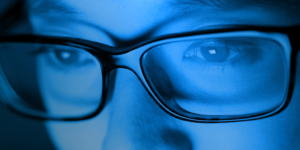Screen time during isolation-What we can do to protect ourselves.
Model featured in photography
Covid 19 and Social Isolation
The Covid-19 Pandemic has significantly impacted lives worldwide, necessitating measures such as social isolation, hand hygiene, respiratory etiquette, quarantine, and the closure of non-essential services to mitigate its spread.
In Australia, these strategies have been effective, leading to a new normal that has altered both business operations and personal routines. Many individuals are now spending more time at home and relying on digital devices to stay connected and fulfill work responsibilities.
Screen Time
During the COVID-19 pandemic, Australians experienced a notable increase in screen time. A study by Deakin University’s Institute for Physical Activity and Nutrition found that parents spent an additional 14.5 hours per week on screens compared to pre-lockdown periods.
This equates to over two extra hours daily. While specific national averages are limited, this data indicates a significant rise in screen usage among adults during the pandemic.
What can we do about screen time?
Managing screen time during the COVID-19 pandemic is essential for maintaining overall well-being. You may consider establishing screen-free periods, prioritising quality content, scheduling regular breaks, creating a balanced routine, utilising device settings to monitor usage, engaging in alternative non-digital activities, and practising mindfulness regarding technology use. These approaches may help individuals balance digital engagement with other aspects of life, promoting better health outcomes.
Understanding Blue Light and Managing Screen Exposure
What is Blue Light?
Blue light is a high-energy portion of the visible light spectrum with wavelengths ranging from approximately 400 to 500 nanometers. It is characterised by shorter wavelengths and higher energy output compared to other colours in the visible spectrum. Blue light is present in natural sunlight, which is its main source, as well as in artificial light sources such as LED and fluorescent lights, and electronic devices like smartphones, tablets, computers, and televisions.
HEV (High Energy Visible) light refers to the high-energy portion of the visible light spectrum, specifically in the range of 400-500 nanometers. This range encompasses violet and blue light, which is why it’s often called “blue light”.
Does Blue Light Cause Photogenic Ageing?
Blue light has been linked to photogenic aging of the skin. Some studies indicate that prolonged exposure to high-energy visible (HEV) light, particularly in the blue spectrum (400-500 nanometers), can contribute to premature skin aging. This type of light penetrates deeper into the skin than UV rays, reaching the dermis where collagen and elastin reside.
Blue light exposure generates reactive oxygen species (ROS), which are harmful to the skin. This process may result in the formation of fine lines, wrinkles, loss of skin elasticity, and hyperpigmentation.
While the effects of blue light are not as immediately damaging as UV radiation, the cumulative exposure from both natural sunlight and artificial sources like digital screens and LED lighting is becoming a significant concern for long-term skin health.

What can we do about the blue light?
We can use our devices less if possible. The use of blue light blocking glasses is effective, and these are available at a number of retailers (more as a fashion statement-blue spectales). Specific eye lenses can be made or purchased to filter out blue light.
Other options are turning the screen brightness down on our devices, some devices allow the colour to be changed to a dim grey.
Take more frequent breaks from the screen and remember to blink more.
To mitigate the effects of blue light exposure, several strategies can be employed.
Wearing blue light blocking glasses, especially during evening screen time, can significantly reduce the amount of blue light reaching your eyes.
Installing screen filters or using built-in night mode settings on digital devices can help decrease blue light emissions.
Taking regular breaks from screens using the 20-20-20 rule (every 20 minutes, look at something 20 feet away for 20 seconds) can alleviate digital eye strain.
Limit screen time before bedtime, ideally avoiding bright screens for at least two hours before sleep.
Using skincare products with antioxidants and iron oxides may offer some protection against potential skin damage from blue light exposure.
It is important to consult with a healthcare professional for personalised advice.
SHARE THIS ARTICLE
Oct08
Upper vs Lower Eyelid Surgery: What’s the Difference
Disclaimer: At Artiste Plastic Surgery, our Plastic Surgeons led by Dr Jack Zoumaras have been trained to the highest possible degree. All surgery has risks and it is always advised ...
Oct08
Blepharoplasty for Hooded Eyes: Before & After Guide
Disclaimer: At Artiste Plastic Surgery, our Plastic Surgeons led by Dr Jack Zoumaras have been trained to the highest possible degree. All surgery has risks and it is always advised ...
ABOUT ARTISTE
Artiste Plastic Surgery is an Award Winning Specialist Plastic Surgery practice led by internationally trained Dr. Jack Zoumaras, Plastic Surgeon and Peer Reviewed Face Surgeon
Artiste offers the latest Cosmetic Surgical Procedures of the Face, Breast and Body, inspired from leading centres around the world.
STAY IN THE LOOP
Enter your email address below to receive updates on new articles and VIP access to promotions and special offers.
FOLLOW US ON INSTAGRAM
